This article appeared in the Summer 2022 issue of This Old House Magazine.
A kitchen garden is more than just a place to grow vegetables for cooking—it can be a beautiful and functional addition to your landscaping. Nicole Burke, founder of Rooted Garden, has revolutionized the concept of kitchen gardens by combining aesthetics with utility. Inspired by the classic French potager, Burke’s designs integrate edibles with ornamentals to create a food garden that’s just as beautiful as it is practical. Read on to see more of her kitchen garden ideas and how to implement them in your own backyard garden.
What You Need To Know to Design a Kitchen Garden
Creating a kitchen garden requires some careful planning before you jump into the building process. From choosing the right location to determining the size and layout, each step is important if you want your garden to thrive in your backyard. Follow the steps below to implement Burke’s insider tips for a successful kitchen garden.
Step 1: Find the Sun
Sunlight is one of the basic building blocks for plant growth, so finding the best spot in your yard for sun to shine should be your first step when designing your kitchen garden. To start, use a smartphone compass or the Sun Seeker app to identify south on your property. Then, try to find a spot with the least shade so trees, structures, and other objects won’t block your garden’s sunlight. Keep in mind that different plants have varying sunlight requirements:
Here are the hours of sunlight required each day for different types of plants:
- Leafy greens: 3 to 6 hours
- Most herbs: 5+ hours
- Beans, peas, root crops: 6 hours
- Peppers: 6+ hours
- Tomatoes: 8+ hours
Remember, even small obstructions like shrubs can impact the amount of sunlight your garden receives. Without proper sunlight, your plants will struggle, so don’t overlook this basic step.
Step 2: Determine the Size of Your Garden
The size of your kitchen garden depends on several factors, including the number of people it will feed and how much time you can dedicate to maintenance. Burke recommends starting with about 200 square feet of growing space, typically divided into six raised beds measuring 4 by 8 feet each. This size allows for a good variety of crops without being too much work for gardeners to maintain.
It’s safe to assume you’ll spend about 90 seconds to maintain each square foot of growing space per week, so those 200 square feet equate to roughly five hours of weekly upkeep during the growing season. Use the chart below to gauge how much time it will take to maintain your garden based on its size.
Kitchen garden specs:
| Growing Space | Weekly Maintenance | Daily Food Harvest During the Growing Season |
|---|---|---|
| 25 square feet | About 40 minutes | About 2 servings of greens or 1–2 servings of vegetables or fruit per day (30–40 days after putting in starter plants) |
| 50 square feet | About 75 minutes | 3 servings of greens or 2–4 servings of vegetables or fruit |
| 75 square feet | About 2 hours | 4 servings of greens or 3–5 servings of vegetables or fruit |
| 100 square feet | About 2.5 hours | 6 servings of greens or 4–8 servings of vegetables or fruit |
| 200 square feet | About 5 hours | 12 servings of greens or 8–16 servings of vegetables or fruit |
| Growing Space | Weekly Maintenance | Daily Food Harvest During the Growing Season |
Step 3: Pick Your Garden Shape
Not all yards have the same layout, so it’s important to pick a garden shape that suits your space. Here are just three of the types of garden shapes that Burke turns to when considering layouts for a yard.
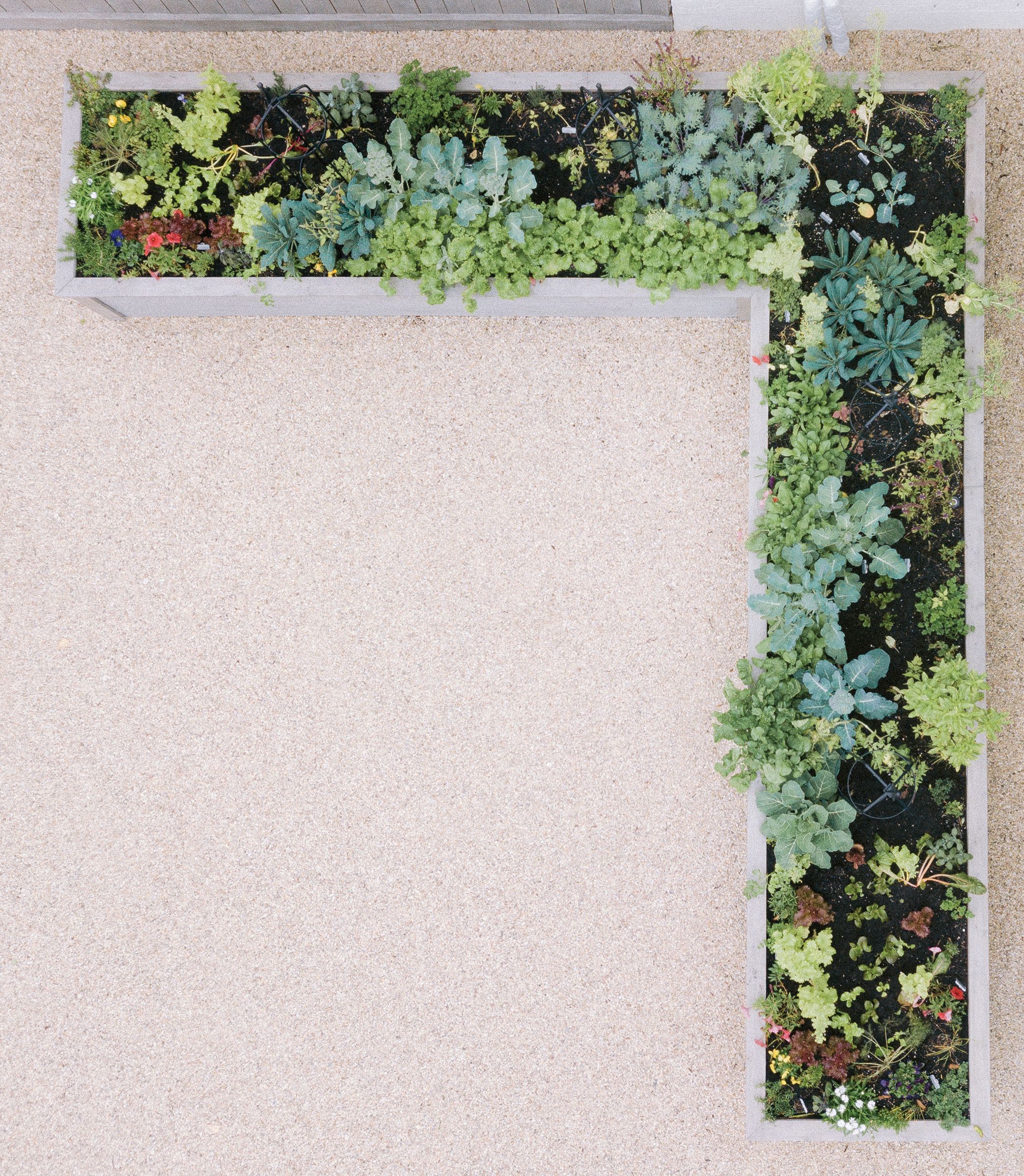
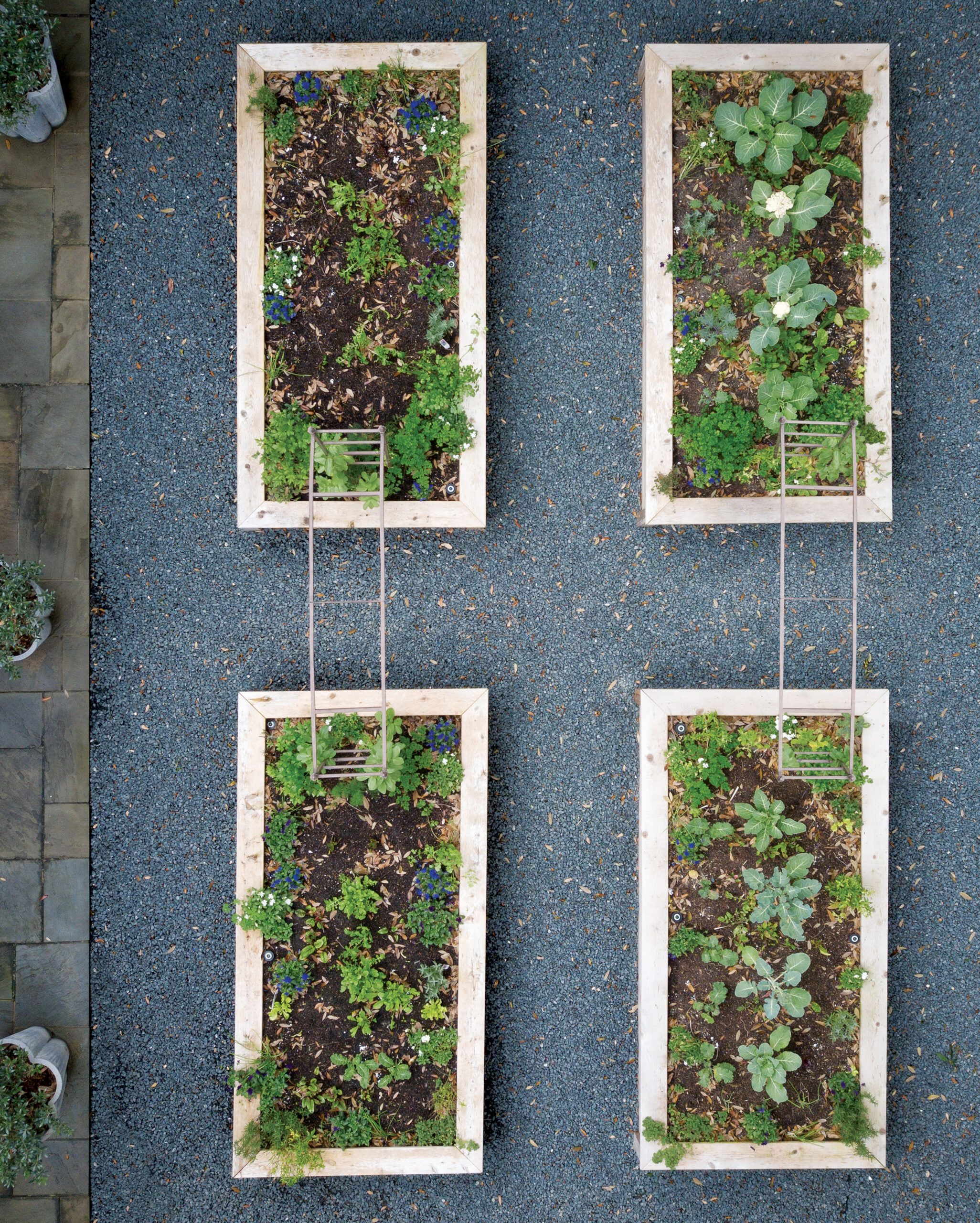
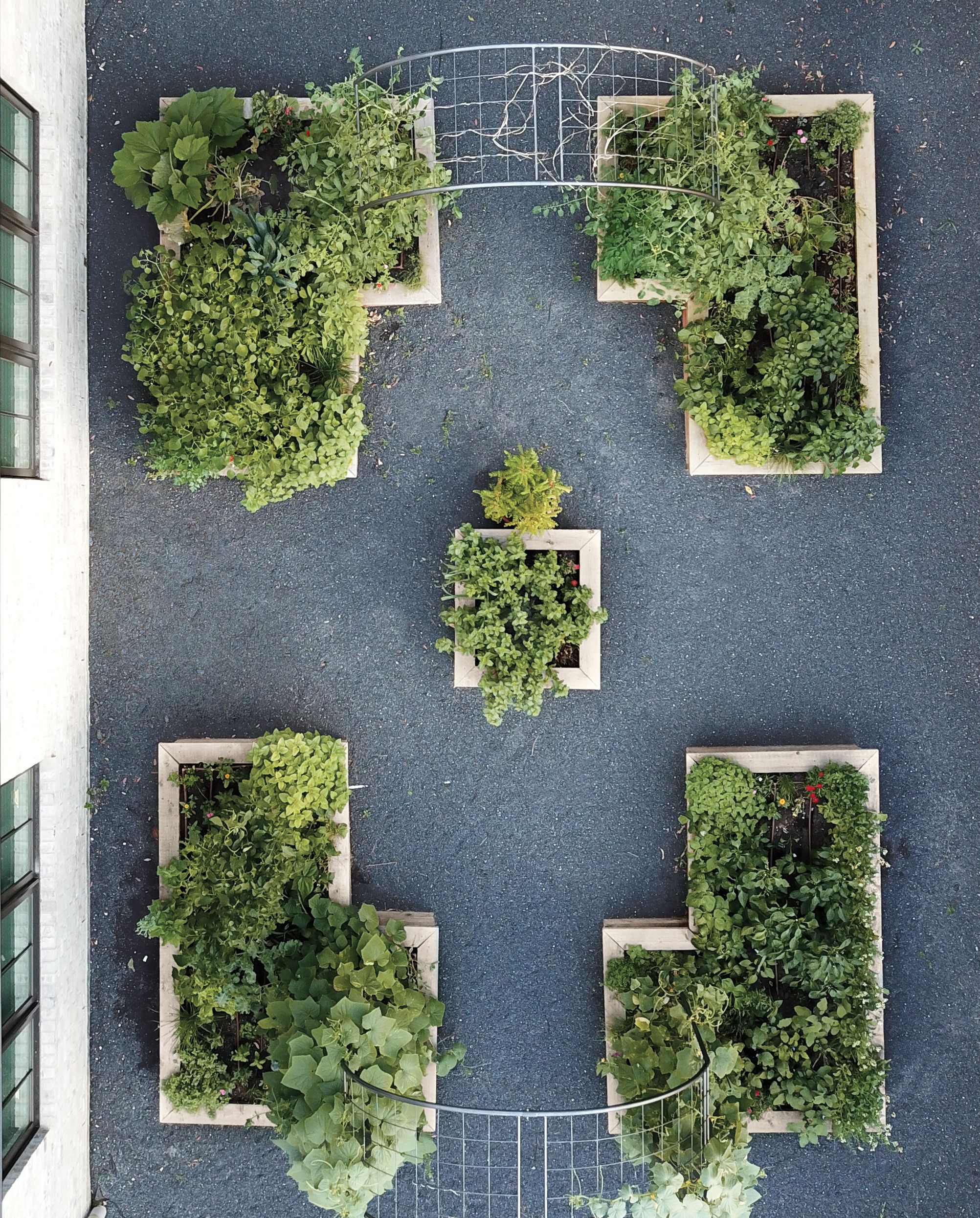



Border Garden
This type of garden shape is ideal for maximizing space along existing structures like fences or driveways. These gardens typically feature up to four raised beds at least 2 feet deep, arranged in an L-shape or parallel configuration. If you have a narrow yard or you don’t have much available space, this may be the best layout for your garden.
Four-Garden Classic
This layout creates a natural entry point and allows for easy organization of different crop types, all within arm’s reach. For extra flair, you can even add an arched trellis that acts as a front door into your garden room. This shape is perfect for square garden areas at least 15 feet wide.
Formal Potager
If you have a bigger backyard space, at least 20 by 20 feet, this elaborate design may be best for you. It incorporates L-shaped beds, decorations, fruit trees, and other decorative features. This layout is both practical and aesthetically pleasing, making your garden a focal point for your backyard.
Step 4: Plot Your Plan
While having a plan in your head is a great first step, it helps to sketch your plan on paper before taking it outside. Once you have your plan drawn out, you can start marking out your garden beds in your yard.
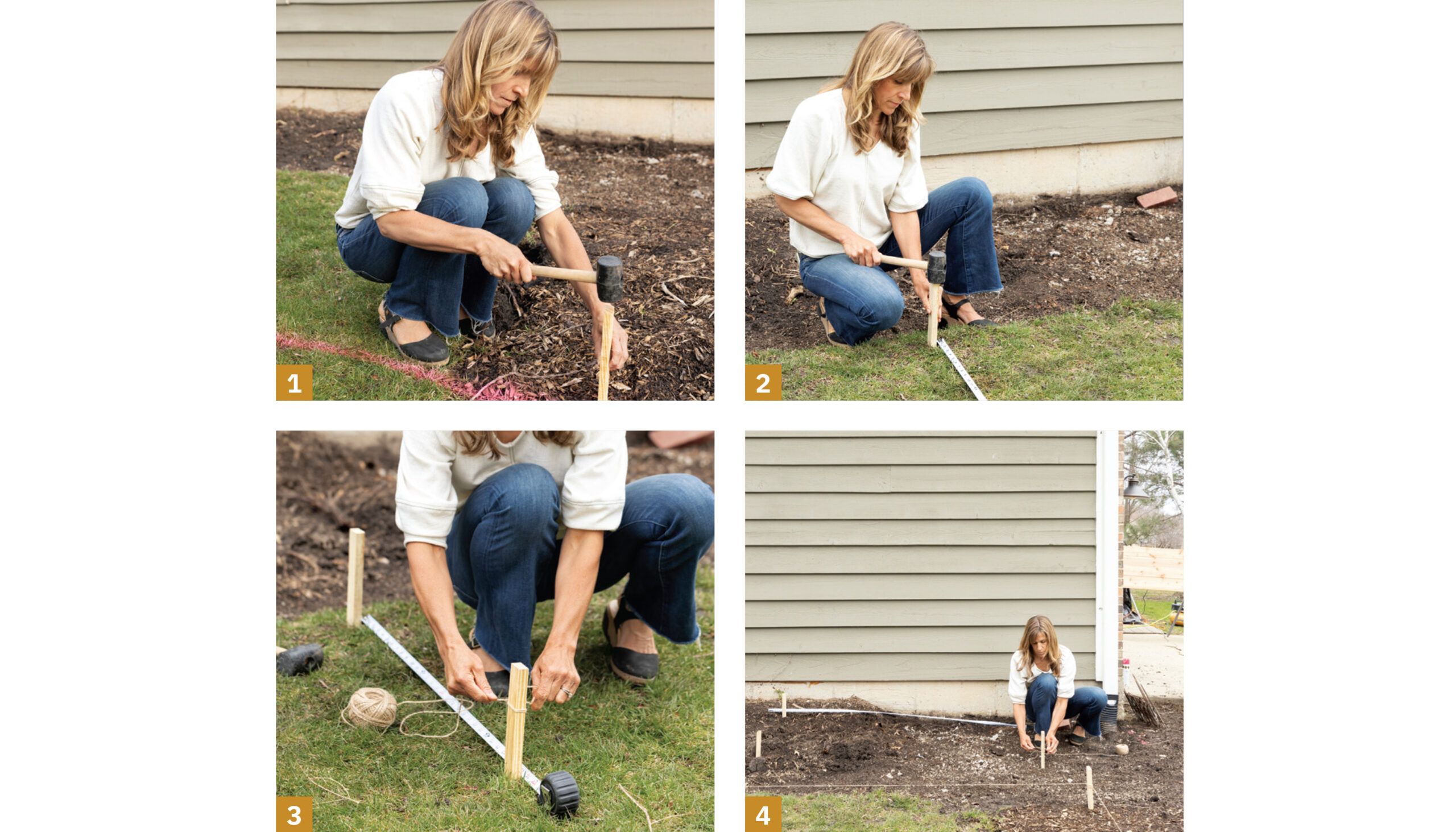
Marking the size and location of your garden beds can help you make design tweaks before building. First, gather spray paint, wood stakes, twine, and a measuring tape. Then, mark out the proposed perimeter and each of the beds using the steps below:
- Drive stakes into the ground to represent the garden’s perimeter.
- Connect the stakes with spray paint or twine to outline the garden boundary.
- Measure and mark the corners of each raised bed within the garden area.
- Use twine to represent the footprint of each raised garden bed.
If you plan to include pathways in your design, ensure that pathways between beds are at least 3 feet wide for easy access.
Step 5: Beds Above the Rest
Raised beds aren’t essential for a backyard kitchen garden, but they can be extremely beneficial. When thinking of your kitchen garden ideas, consider adding raised beds to increase your garden’s productivity and aesthetics.
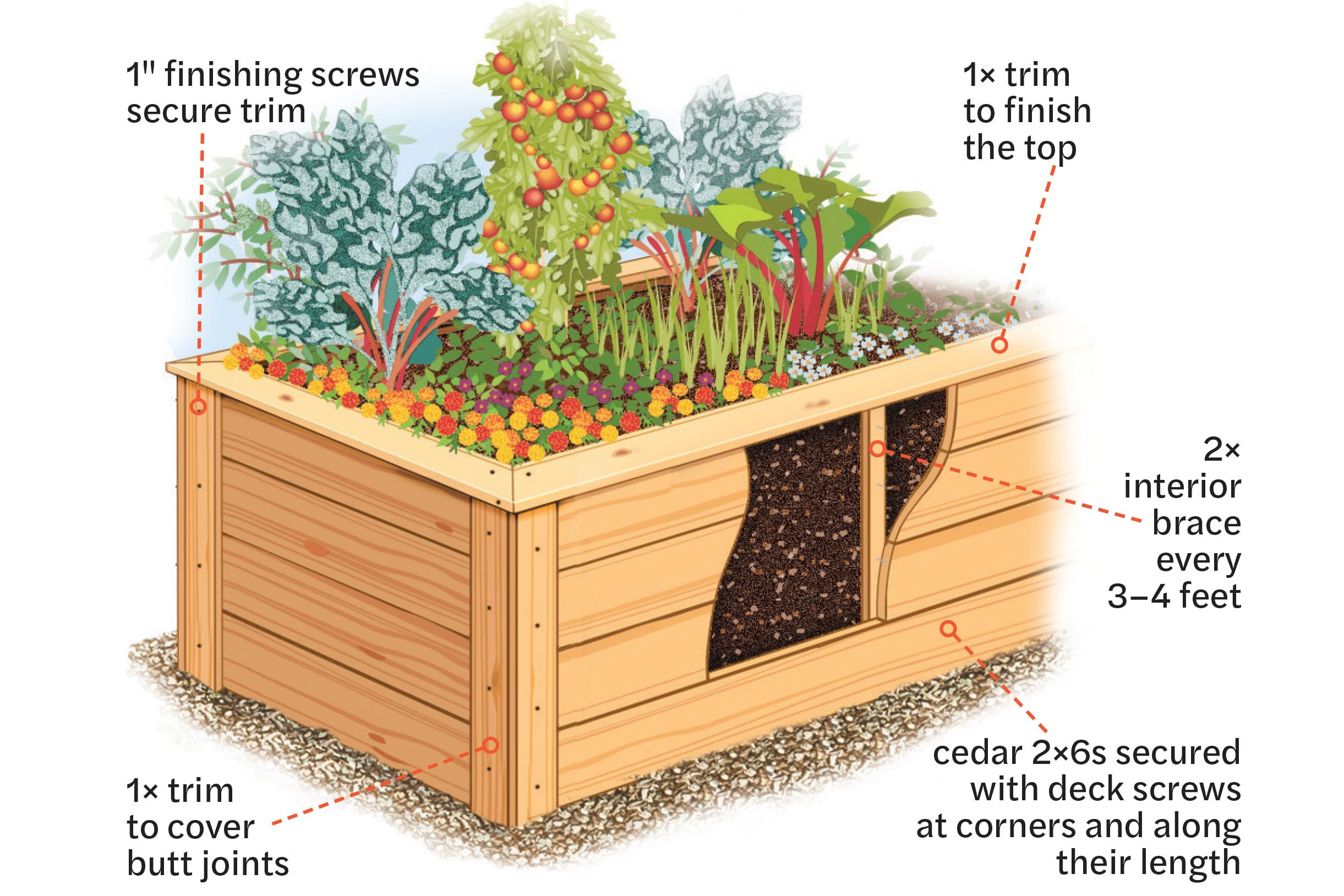
Raised beds offer numerous advantages, including better soil control and immediate planting opportunities. While it costs more to build and fill raised beds with amended soil, it saves time since you can garden right away. “With a raised bed you don’t have to wait years to have great soil,” Burke says.
Raised beds can also reduce back strain and provide better drainage, making them easier to maintain. Despite the initial investment, their benefits can pay off in the long run. Burke recommends beds between 6 and 8 feet long, with a width of about 4 1/2 feet if accessible from all sides. For optimal growing conditions, aim for a soil depth of 1 to 2 feet.
Step 6: Make Order Out of Chaos
When it comes to building a garden, accurate measurements and an installation plan are key. Don’t be afraid to ask friends and family for help with organizing and installing your kitchen garden beds.
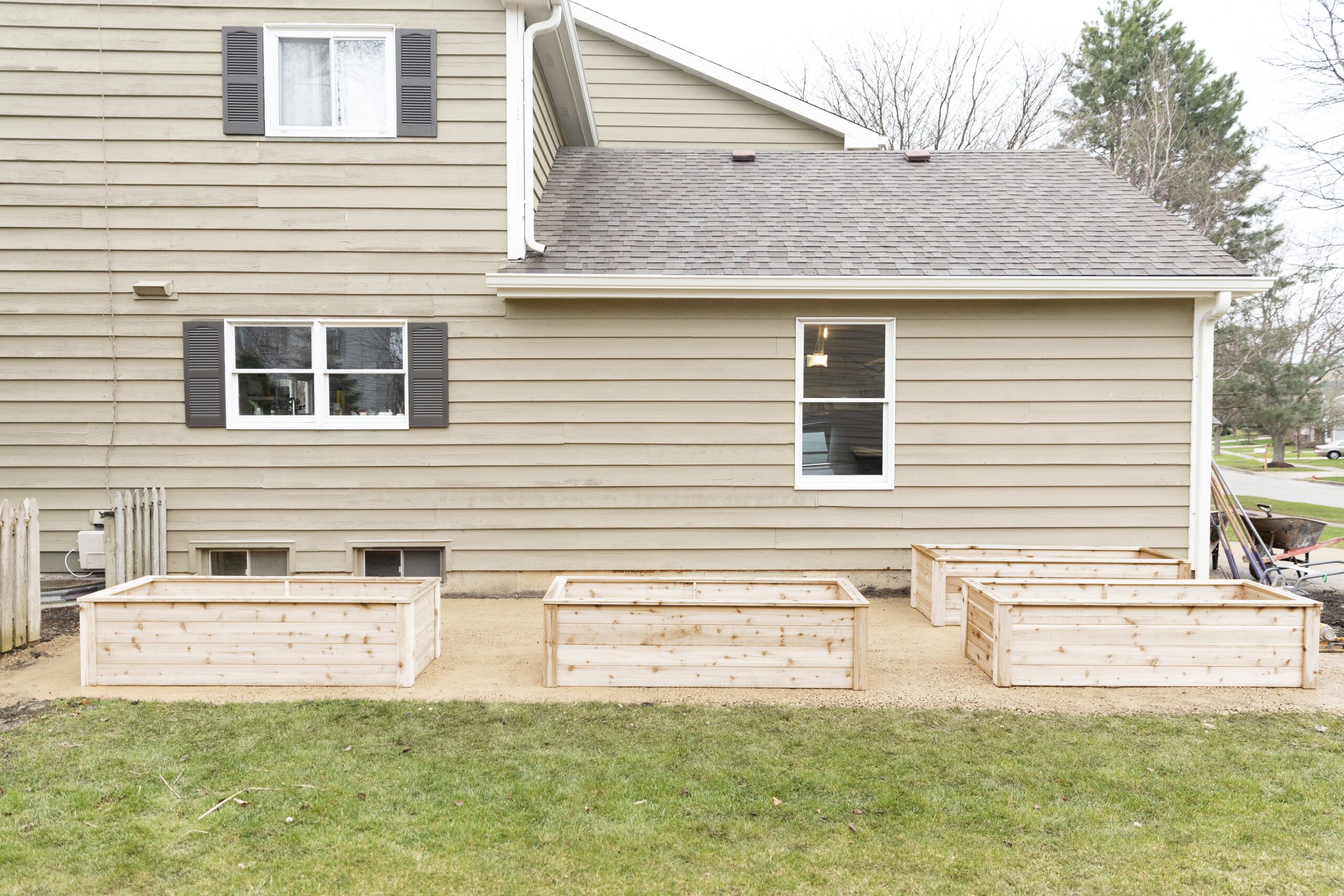
Once you have your plan in order, it’s time to get to work. Follow these steps for a smooth installation process:
- Clear the area and dig a perimeter trench for edging material.
- Begin irrigation by digging trenches and burying lines.
- Rake and level the garden floor.
- Lay a weed barrier such as rosin paper or cardboard.
- Install border edging, ensuring straight lines and square corners.
- Place pathway stones on the weed fabric.
- Fill the floor with 3 inches of gravel, leveling as you go.
- Position and level the raised garden boxes if using.
Step 7: Get Some Support
Vining plants in your garden may need some help growing vertically, so it’s important to leave room for trellises when building your backyard kitchen garden.
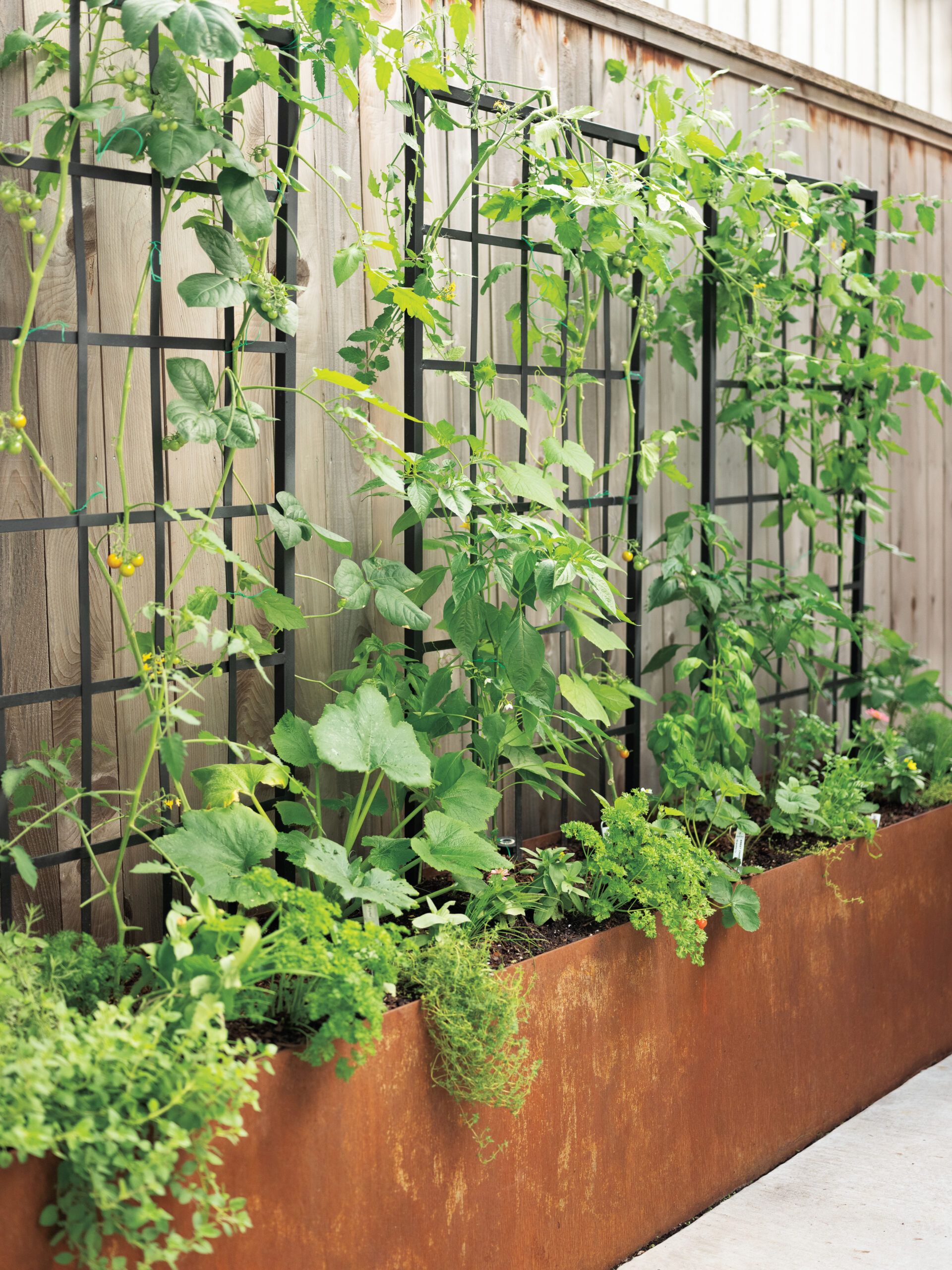
Trellises help support vining plants and add some decoration to your layout, so they’re worth installing for gardens with tomatoes, beans, squash, and peas. They also help maximize the space in your garden by growing plants vertically instead of overcrowding your beds. Burke recommends one trellis per 16 square feet of bed space. Install trellises after adding about 1 foot of soil mix to the beds, securing them before filling the boxes completely.
Step 8: Recipe for Soil Success
A high-quality soil mix is important for a thriving kitchen garden. However, not all soil is the same.
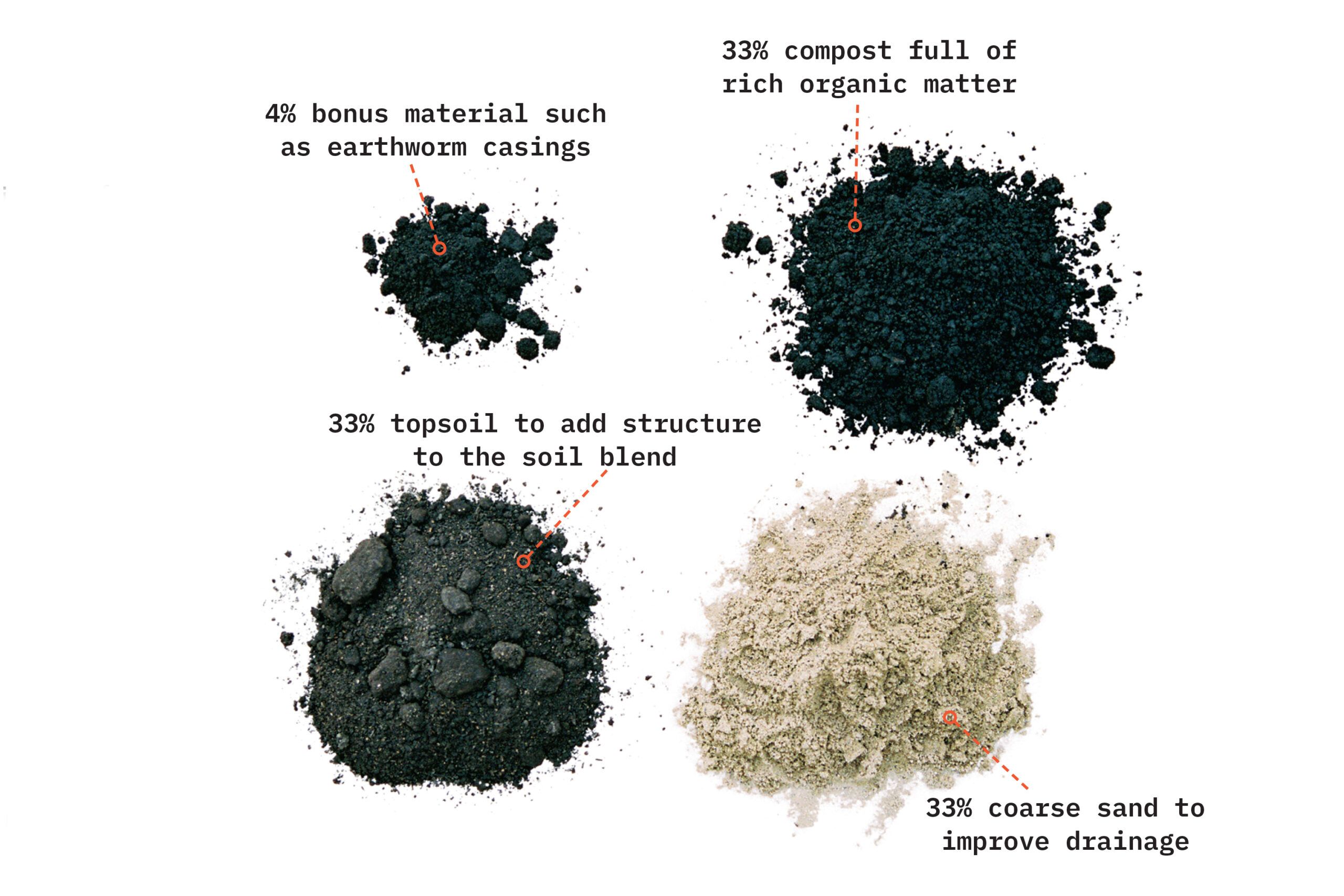
A good soil mix provides essential nutrients, improves drainage, and supports healthy root growth. Because of this, Burke developed her own formula for nutritious garden soil that is proven to help your plants thrive. This mixture consists of:
- 1/3 sharp (coarse) sand
- 1/3 organic compost
- 1/3 topsoil
- 4% “bonus material” (such as worm castings, composted chicken manure, or organic fertilizers)
To calculate the amount of soil needed, multiply the length, width, and depth of your beds in feet, then divide by 27 to get the volume in cubic yards. Order slightly more than the calculated amount to ensure you have enough to fill your beds completely.
For more information on soil testing and planning your garden project, check out the United States Environmental Protection Agency’s guide to site risks for garden and growing activities.

